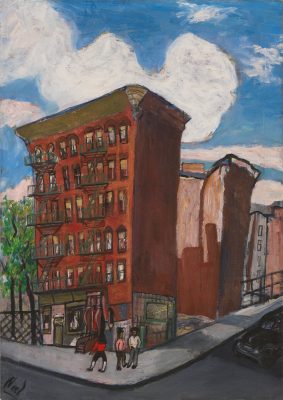Peter Stamm’s international reputation as a writer of acute psychological perception and meticulously precise prose has been growing steadily since his first novel, Agnes, was translated into English by Michael Hofmann and published in 2000. When I try to describe Stamm’s writing to those who have yet to encounter it, it is easy to revert to the words oft-used by reviewers of his work: ‘spare’, ‘clean’, ‘crystalline’, even ‘forensic’. The blurb of one of his novels calls him ‘the master of unadorned prose’. But there are vast depths beneath this cool, clear surface. As Toby Litt wrote of Stamm’s novel Seven Years in the Guardian, his prose is ‘booby-trapped throughout, with devastations waiting to happen.’
Always existential, often beginning with a life-changing event – such as the disappearance of the narrator’s girlfriend in Agnes, or the car crash that kills a woman’s husband and leaves her disfigured in All Days Are Night – Stamm explores in his fiction the nuances of identity, self-perception, and the ways in which his characters interact with the world and other people. His novels and stories are deeply psychological, exploring human behaviour and the dark underside of the psyche. He is interested in aftermath, and he is unafraid of difficult emotions – guilt, shame and regret are themes to which he often returns. Many of his characters are haunted by past mistakes and missed opportunities; some desire people they can’t have, others reject lovers or are themselves rejected. Seven Years – my favourite of his novels – tells the story of a handsome man, Alex, and his beautiful wife, Sonia, but also a ‘repulsive’ woman, Ivona, with whom Alex has an affair. Things happen to people in Stamm’s fiction, and witnessing the uncomfortable, darkly funny, often tragic fallout unfold is one of the main pleasures of reading his work.
Stamm was born in Weinfelden, Switzerland, in 1963. After leaving school he trained as an accountant, and then studied for a few years Psychology, Psychopathology and Literature (and worked for a time in a psychiatric clinic) before becoming a full-time writer. As well as novels and short stories, he has written plays, radio dramas, and journalism. His work has been shortlisted for the Man Booker International Prize and the Frank O’Connor International Short Story Prize.
Much of this interview, which took place via email over the course of several weeks this summer, concerns Stamm’s new novel, To The Back of Beyond. It tells the story of a man called Thomas, and his wife and two children whom he leaves behind, from the moment he decides to walk out of the family home and keep on walking, seemingly with no intention of ever returning. It is a novel about love, death, and walking in the Swiss landscape, and an existential exploration of dissociation and the life-changing consequences of a momentary impulse.




